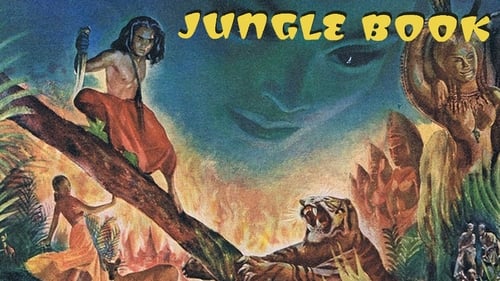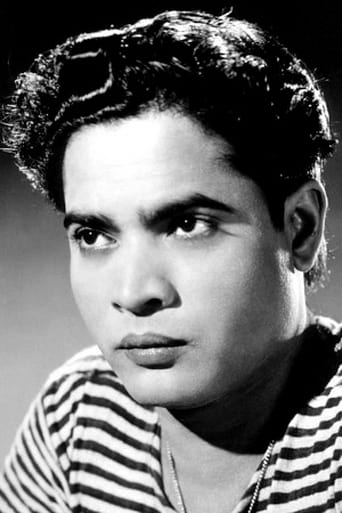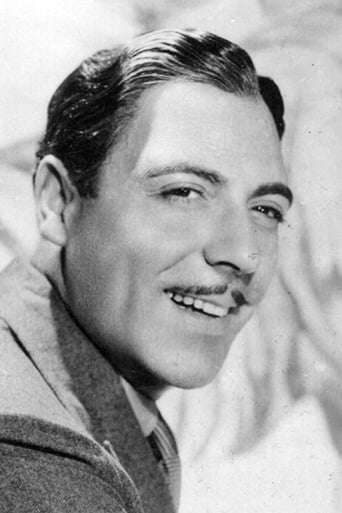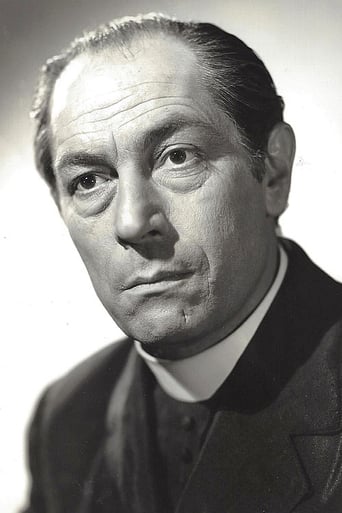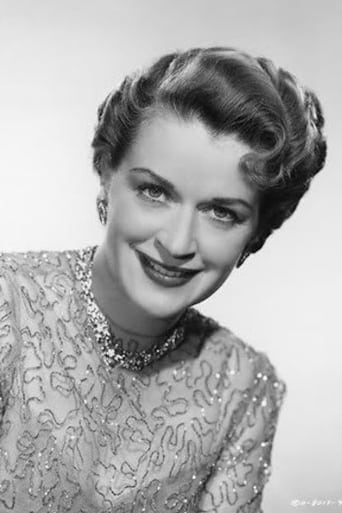VividSimon
Simply Perfect
BoardChiri
Bad Acting and worse Bad Screenplay
Salubfoto
It's an amazing and heartbreaking story.
Zlatica
One of the worst ways to make a cult movie is to set out to make a cult movie.
JohnHowardReid
Copyright 13 April 1942 by Alexander Korda Films, Inc. Released through United Artists. A Zoltan Korda film. Presented by Alexander Korda. New York opening at the Rivoli: 4 April 1942. U.S. release: 3 April 1942. U.K. release: 5 June 1942. Australian release: 7 January 1943. 9,521 feet. 106 minutes.
Copyright title: RUDYARD KIPLING'S JUNGLE BOOK.SYNOPSIS: Wolf boy is forced to lead a trio of evil villagers to a king's treasure chamber in a lost city.NOTES: Negative cost: Sterling £250,000.Nominated for the following Academy Awards: Best Color Cinematography (lost to Leon Shamroy's The Black Swan); Best Music Scoring of a Dramatic or Comedy Picture (lost to Max Steiner's Now, Voyager); Best Art Direction in Color (lost to My Gal Sal); Best Special Effects (lost to Reap the Wild Wind).COMMENT: The dialogue is atrocious and Mr Calleia gives an especially hammy performance, even affecting a ridiculously phoney accent (on top of his normal accent, would you believe?) which he was evidently persuaded to drop half¬way through the film. His co-conspirators, Puglia and Qualen, are upon us at this point - and they are almost equally appalling. These two do not figure in Kipling's stories, and Stallings has even introduced an old vaudeville wheeze (the barber places his foot over a dropped coin) to keep them occupied.The rest of the principal players, led by the redoubtable Sabu (who is in fine form and seems to do all his own stunts) are somewhat more capable, though hampered too by the dialogue. It must be admitted that Stallings has lifted a fair amount of this straight from Kipling. It reads more fluently than it sounds.
But it doesn't really matter. For Jungle Book has four or five things going for it that elevate it to a pantheon of artistic achievement.It's difficult to decide between the music and the cinematography for first place. Jungle Book is one of the finest examples of Technicolor photography I've ever seen. The colors positively glow with such artistry as impart to forest and animals a three-dimensional life. The music is undoubtedly the most stirring score Rosza ever composed. He had the good judgment to utilize it (with a minimum of adaptation) for his famous "Rudyard Kipling's Jungle Book Suite" (a recording originally issued on 78 rpm with Rosza conducting the Victor Symphony Orchestra, and narration by Sabu. I prefer the later version: Rosza conducting the Frankenland State Symphony Orchestra, with Leo Genn narrating).Add to the music and photography, Vincent Korda's truly magnificent sets and some spectacular animal footage directed by Andre De Toth, and you have at least four unimpeachable reasons why, despite the occasional clumsiness of dialogue, acting and direction, Jungle Book is a richly endowed masterpiece.
SnoopyStyle
In an Indian village, elderly storyteller Buldeo tells a story of his youth to a passing British lady. Shere Khan the tiger attacked just as the villagers are about to start a new settlement. The man's cub survives the attack and wonders into a wolves' den. Mowgli is then raised by the wolf family. All the jungle is his playground except for Shere Khan. Twelve years later, he investigates the village and is captured by the villagers. His birth mother Messua doesn't recognize him but takes him in anyways as her own. Buldeo is adamant against the boy who he sees as evil like the rest of the jungle. On the other hand, Buldeo's daughter Mahala is fascinated with Mowgli. Mowgli takes Mahala back into the jungle to meet the wolves. She finds the King's Palace in the jungle and his treasure chamber guarded by the ancient father of the cobras. Despite the cobra's warning, she takes one coin which is discovered by her father. This looks terrific in Technicolor although the village doesn't look as good as the jungle. All the animal footage is very fascinating. The animals look great in color. The treasure chamber is also quite nice with the ancient city. It's most commendable that they cast an Indian boy as Mowgli. The animal characters don't have quite as much of a presence as the Disney cartoon. This is a little more grown up than the cartoon. It deals with some fairly adult subject matters. Overall, the story moves along with enough thrills and is a fun treat from another era. Although the ending feels like it ran on for a little too long.
SimonJack
"The Jungle Book" is one of the earliest animal movies made. The Tarzan movies that began in the 1930s had some animals, but this film was the first that showed the public video scenes of numerous jungle creatures. And, it was done in full color in 1942. Unless one lived in a big city that had a zoo in the early to mid-20th century, you weren't able to see live jungle animals. For most children growing up in those years, the only pictures of tigers, elephants, monkeys and crocodiles one saw were those in books or National Geographic magazine. So, this film was the first moving picture of live animals that many people saw. Later, of course, TV would add to the exposure, and animal theme parks would start to proliferate – after Disneyland opened in 1957.In the first six decades of the 20th century, Rudyard Kipling ruled large for his stories with many animals that inhabited the jungles of India. I remember reading "Rikki-Tikki-Tavi" and some other Kipling stories as a child. Kipling was a master story teller, and he wrote in numerous forms – novels, short stories, poems. His best works were adventure novels and children's books. Kipling's works were natural sources for screenplays with which to make movies. Indeed, some of these titles will loom large to movie buffs. Besides "The Jungle Book" in 1942, Kipling's "Captains Courageous" was made into a film in 1937. The MGM film starred Spencer Tracy and Freddie Bartholomew. It earned Tracy his first Oscar and received three more Academy Award nominations. Hallmark produced a TV movie based on the story in 1996, starring Robert Urich and Kenny Vadas. In 1939, RKO made "Gunga Din," from Kipling's poem of the same title. It starred Cary Grant, Joan Fontaine, Victor McLaglen, and Douglas Fairbanks, Jr. That received an Oscar nomination for best black and white cinematography. In 1950, Errol Flynn, Dean Stockwell and Paul Lukas starred in another Kipling story, "Kim," which was made by MGM. A TV version of that story was made by London Films in 1984, and aired on CBS in the U.S. It starred Peter O'Toole. In 1975, Sean Connery and Michael Caine starred in "The Man Who Would be King," an adventure story set in a fictitious middle Asian country. Kipling knew a number of other prominent writers of his time – T.S. Eliot, George Orwell, Mark Twain, and some who became friends – Henry James and Arthur Conan Doyle. Many in the field of literature considered Kipling the best British writer and story teller of his time, an accolade shared by much of the public as well. In 1907 he became the first writer of English to win the Nobel Prize for Literature, and he remains the youngest person (at age 41) ever to receive that award. Born in India, Kipling traveled a great deal and lived in many different places, including more than four years in the Untied States. It was during that time, living in Vermont, that he wrote the Jungle books, his novel, "Captains Courageous," and another volume of poetry. He met many heads of state, and befriended President Theodore Roosevelt.
Peyote Coyote
I found the film simple and enchanting. maybe its because i came across the film as a child, i cant remember, films are so over the top nowadays its a pleasure to go back to simple things although an Indian speaking perfect English is incredible! Haha There was so much more effort put into the films of those days Today everything gets run through a computer for amazing effects but fake. The jungle book actions are all real (so far as i know from what i see) They did their own stunts ;) Anyone who moans about it really is a sourpuss.xXxPeacexXx myspace.com/wishcard




